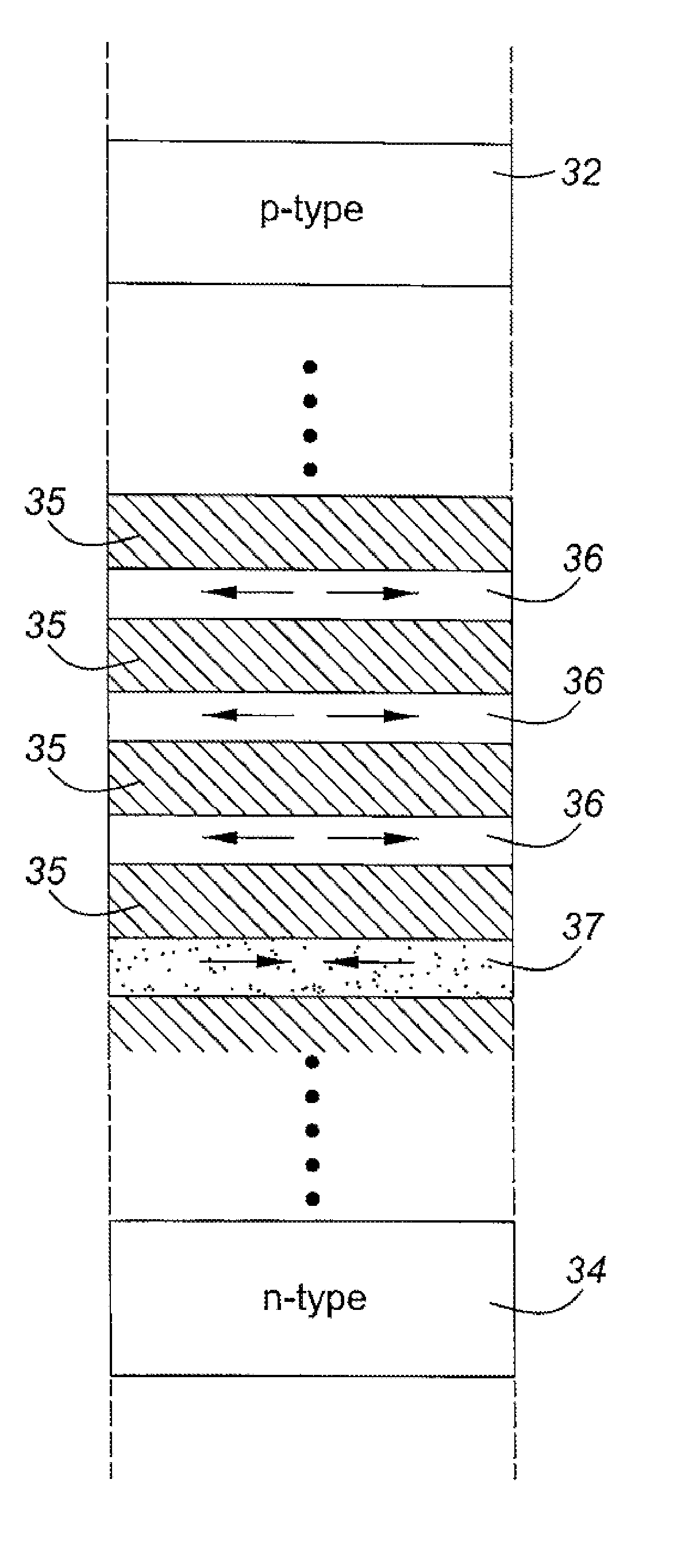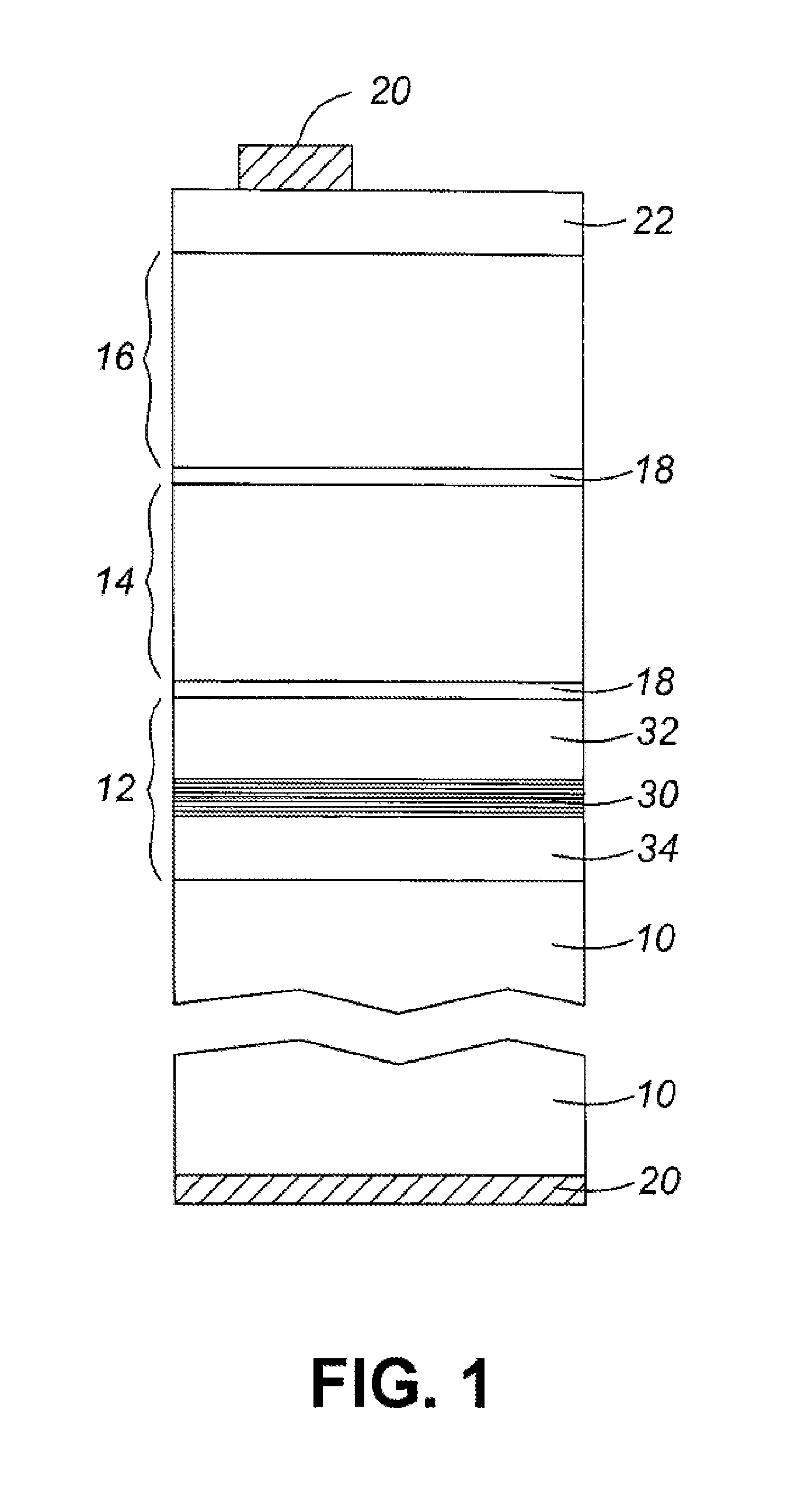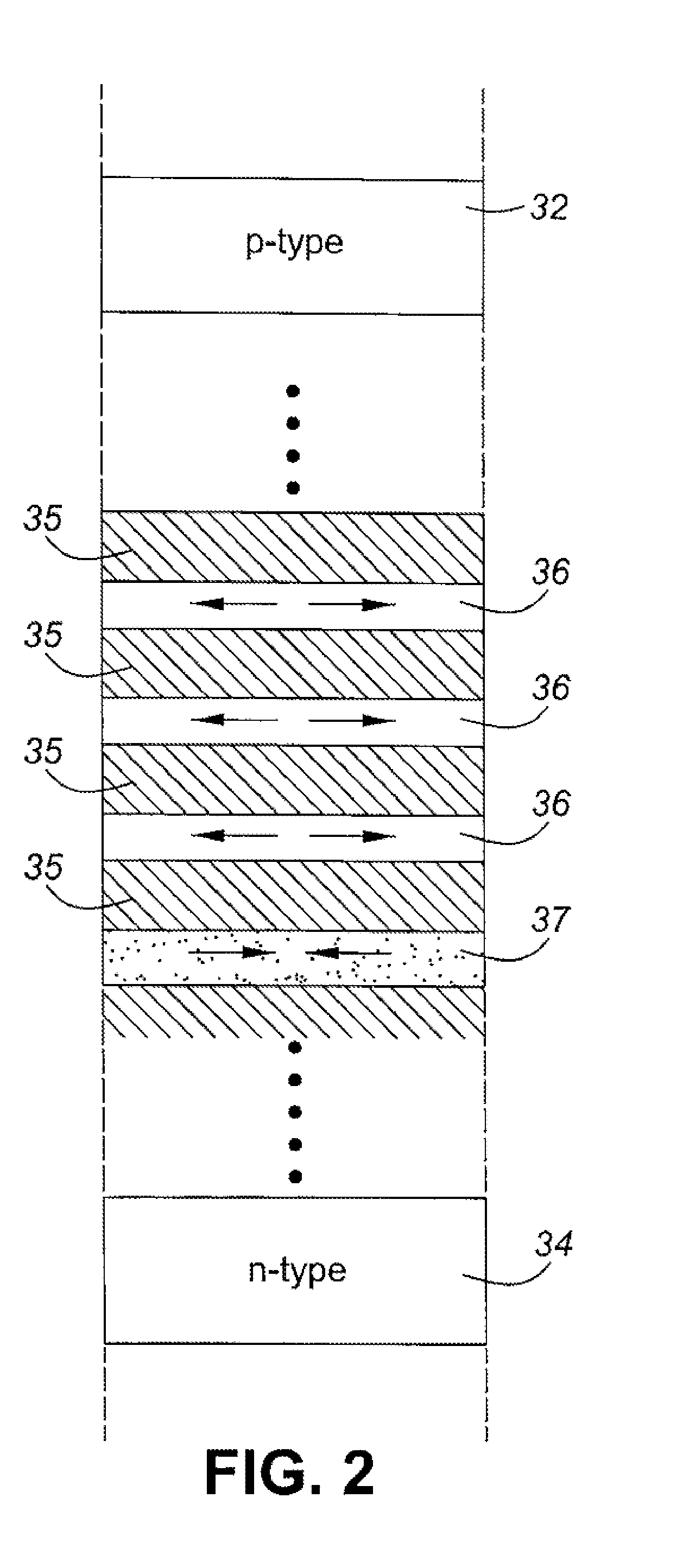Photovoltaic junction for a solar cell
a photovoltaic junction and solar cell technology, applied in the field of photovoltaic junctions, can solve the problems of reducing the efficiency of the photovoltaic junction and the solar cell, poor material quality in the layer containing indium, etc., and achieves the effects of reducing the degree of shift, increasing nitrogen concentration, and long wavelengths
- Summary
- Abstract
- Description
- Claims
- Application Information
AI Technical Summary
Benefits of technology
Problems solved by technology
Method used
Image
Examples
Embodiment Construction
[0056]Referring now to FIG. 1, epitaxially grown layers of a solar cell according to a first embodiment of the invention are shown schematically in cross section. Not all layers are necessarily shown in the figure, and the layer thicknesses are not intended to be to scale. Broadly, the cell comprises a substrate 10 on which are formed one or more photovoltaic junctions. In this example, three photovoltaic junctions 12, 14, 16 are shown, but any suitable number may be used as required. The photovoltaic junctions are coupled using tunnel junctions 18, so that a common photocurrent passes through all of the junctions, for collection using electrodes 20 typically disposed beneath the substrate 10 to and on top of a window layer 22 overlying the uppermost photovoltaic junction 16. The photovoltaic junctions and other semiconductor layer structures are formed on the substrate using an epitaxial process such as chemical vapour deposition, to form a monolithic structure.
[0057]The substrate ...
PUM
 Login to View More
Login to View More Abstract
Description
Claims
Application Information
 Login to View More
Login to View More - R&D
- Intellectual Property
- Life Sciences
- Materials
- Tech Scout
- Unparalleled Data Quality
- Higher Quality Content
- 60% Fewer Hallucinations
Browse by: Latest US Patents, China's latest patents, Technical Efficacy Thesaurus, Application Domain, Technology Topic, Popular Technical Reports.
© 2025 PatSnap. All rights reserved.Legal|Privacy policy|Modern Slavery Act Transparency Statement|Sitemap|About US| Contact US: help@patsnap.com



